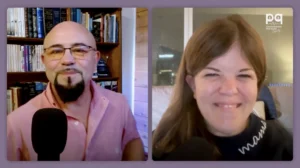Consumers Want More Grocery Store Prepared Meals. How Should Grocers Adapt?
The consumer dollar has spoken: the best thing since sliced bread is sliced turkey. A new FMI report, the FMI Power of Foodservice at Retail, seems to show that deli-prepared food purchases are up 9.3% compared to 2019 numbers and up 2.4% year-over-year in unit sales. It’s clear that consumer appetite for grocery store prepared meals has increased significantly in recent years, supporting the overall growing popularity of grocery store foodservice and general foodservice convenience, from grocery meal delivery to meal kit services.
This proves to be a major opportunity for grocery stores, whose customers, according to FMI, don’t feel like making dinner themselves, see grocery store prepared meals as a good value compared to eating out, and who usually don’t buy grocery store food service because it’s not advertised well.
How can grocers take advantage of this consumer shift, and what are the impacts of this trend on foodservice investments? Mark Hamstra, freelance journalist for Supermarket News and a several dozen-year journalism veteran of the grocery, food, mass retailing, and restaurant industry, gives his reaction to the growing interest in grocery store prepared meals.
Mark’s Thoughts:
“I think this data clearly illustrates that there is strong demand for foods consumed in the home and also a strong demand for convenience. Consumers are both constrained by tight budgets amid an inflationary environment and by constraints on their time.
There were a lot of consumers who were working from home and want a quick and easy meal solution, and consumers also continue to need a convenient meal solution for their whole family for all meals throughout the day. This is a big opportunity for supermarkets to make sure that they’re tapped into current trends in terms of the kinds of flavors and ingredients that consumers are looking for when it comes to prepared foods.
So these are the kinds of meals they might be sourcing in restaurants now, like international flavors also, and whatever trends they might be picking up from social media. So supermarkets need to pay attention to those types of trends, and they also need to make sure they’re providing meals for both individuals who might be eating alone at home, whether they’re elderly consumers or consumers working at home during the day, as well as for whole families.”









